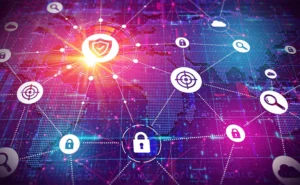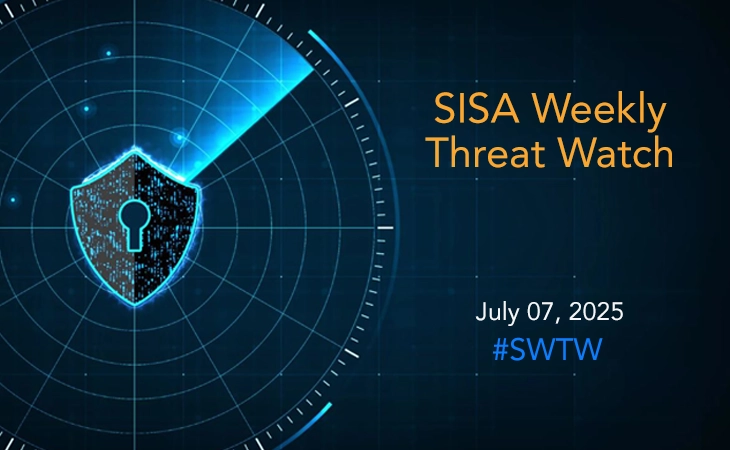
How Does an MXDR Solution Work? 10 Essential Factors to Consider
The evolution of cybersecurity has taken us from the foundational Security Operations Centers (SOC) to the advanced Managed Extended Detection and Response (MXDR) solutions. Each step represents a significant leap in sophistication and effectiveness. Initially, SOCs provided the backbone for monitoring and responding to security incidents, albeit with limitations due to manual processes and traditional tools. The introduction of Managed Detection and Response (MDR) enhanced these capabilities by integrating advanced technologies and external expertise, focusing on proactive threat detection and response. Now, MXDR takes it a step further, integrating various security components into a comprehensive strategy.
Learn More: What is Managed Extended Detection & Response (MXDR)?
How Does an MXDR Platform Work?
MXDR builds upon the capabilities of traditional SOCs and MDR by integrating various security components such as network, endpoint, cloud, and application security into a cohesive and comprehensive strategy. It combines advanced technology with human expertise to enhance threat detection and response. Here is a breakdown of the process:
- Data Collection: MXDR starts with thorough data collection from various sources, processed in a cloud-based data lake.
- Advanced Analytics: Using analytics, including machine learning, MXDR identifies potential threats which security analysts validate and connect across different data sources.
- Integrated Response: When a threat is detected, the SOC responds swiftly using the MXDR platform’s integrated control plane, enabling actions across various domains from a single platform.
- Threat Containment: Containment responses, informed by ongoing forensic analysis, neutralize threats promptly.
- Continuous Improvement: MXDR consistently improves its responses based on evolving threat intelligence, ensuring effective long-term remediation.
MXDR platforms provide a holistic approach to cybersecurity, combining the strengths of MDR with additional layers of security to offer deeper visibility and control across an organization’s entire digital landscape.
Watch Video: ProACT MXDR in Action
10 Things to Look Out for While Choosing an MXDR Platform
Choosing the right MXDR solution is crucial for enhancing an organization’s cyber defenses. With multiple offerings with diverse capabilities existing in the marketplace, choosing the right MXDR provider is a complex task. Here are ten key considerations for enterprises in evaluating MXDR platforms that fit their purpose and requirements.
1. Expertise in Digital Forensics and Investigation
Assess the vendor’s ability to analyze data from managed infrastructure, including the capacity to detect advanced threats and conduct root cause analysis. This ensures that threats are identified and mitigated efficiently.
2. Proactive Threat Hunting Abilities
Verify that the vendor possesses robust capabilities and expertise for identifying potential attackers before they infiltrate your environment. This should be included as a vital tool in your MXDR without any add-on fees.
3. Mitigating Alert Fatigue
The MXDR solution should be able to minimize false positives and streamline communication, ensuring critical alerts receive prompt attention. They should also use open and bi-directional communication between customers and the MXDR team through a robust communication platform.
4. Complete Accountability of the Detection Outcome
The MXDR provider should ensure complete accountability for the detection outcome, demonstrating a proactive approach to delivering effective security solutions. This commitment to accountability fosters trust and confidence in the MXDR provider’s ability to deliver reliable and comprehensive security services.
5. Integration with SIEM and EDR
Select a platform that smoothly integrates signature-based tools such as SIEM and your preferred Endpoint Detection and Response (EDR) software for the most effective defense.
6. Ransomware Attack Readiness
Ensure the MXDR provider has best-of-breed technology and human expertise in identifying and remediating ransomware attacks, including understanding attacker tactics, closing vulnerabilities, and preventing future incidents.
7. Continuous Monitoring
Choose a vendor capable of 24/7 monitoring with a lights-on approach, including over holiday periods. This is crucial for smaller operations susceptible to service disruptions due to staffing limitations.
8. Leveraging Automation and AI-driven Analytics
Invest in an MXDR solution that utilizes AI and ML algorithms for efficient threat detection, analysis, and response, reducing false positives, accelerating response times, and optimizing resource utilization.
9. Prioritizing Continuous Training and Education
Choose a vendor committed to ongoing training and expertise. Ensuring their team stays updated with the latest threats, certifications, and industry knowledge is crucial.
10. Transparent Reporting and Regulatory Compliance
The MXDR provider should be capable of furnishing regular reports, tracking progress, outlining controls, and offering recommendations for addressing vulnerabilities. It is also crucial that the provider adheres to relevant industry regulations and standards, ensuring compliance throughout the detection and response process.
Whitepaper: MXDR: The New Paradigm of Cyber Defense for the Digital Payment Industry
Conclusion
As enterprises persist in their pursuit of best-in-class tools to fortify their cybersecurity, it becomes imperative for Chief Information Security Officers (CISOs) to simplify and streamline their technological landscapes. MXDR offers a seamless, organization-wide defense mechanism, ensuring a clear, unobstructed line of sight to cybersecurity incidents. By strategically orchestrating these resources, security teams can enhance visibility and operational efficiency, providing a distinct competitive advantage in the rapidly evolving digital landscape.
Read More: Redefining Cybersecurity in a Fragmented Landscape: The Case for MXDR
Frequently Asked About MXDR
What is the primary advantage of MXDR over traditional SOCs?
MXDR integrates various security components and uses advanced technologies like AI and ML, providing a more comprehensive and proactive approach to threat detection and response compared to traditional SOCs.
How do MXDR platforms handle false positives?
MXDR platforms utilize advanced analytics and machine learning to minimize false positives, ensuring that security teams focus on genuine threats.
What role does human expertise play in MXDR?
Human analysts validate threats identified by automated systems, correlate data across sources, and make informed decisions on the best response actions.
Why is continuous monitoring important in MXDR?
Continuous monitoring ensures that threats are detected and responded to in real-time, reducing the risk of prolonged exposure and potential damage from cyber incidents.
Why is integration with SIEM and EDR important for MXDR platforms?
Integration with SIEM and EDR tools ensures a seamless and comprehensive security strategy, allowing for more effective threat detection and response across the entire digital environment.
For a deeper understanding of MXDR and how SISA’s ProACT MXDR can strategically enhance your security landscape by improving visibility and operational efficiency, reach out to our forensics experts.
Latest
Blogs
Whitepapers
Monthly Threat Brief
Customer Success Stories
 USA
USA India
India APAC
APAC Middle East
Middle East Global
Global






 Facebook
Facebook Linkedin
Linkedin  X
X Youtube
Youtube






